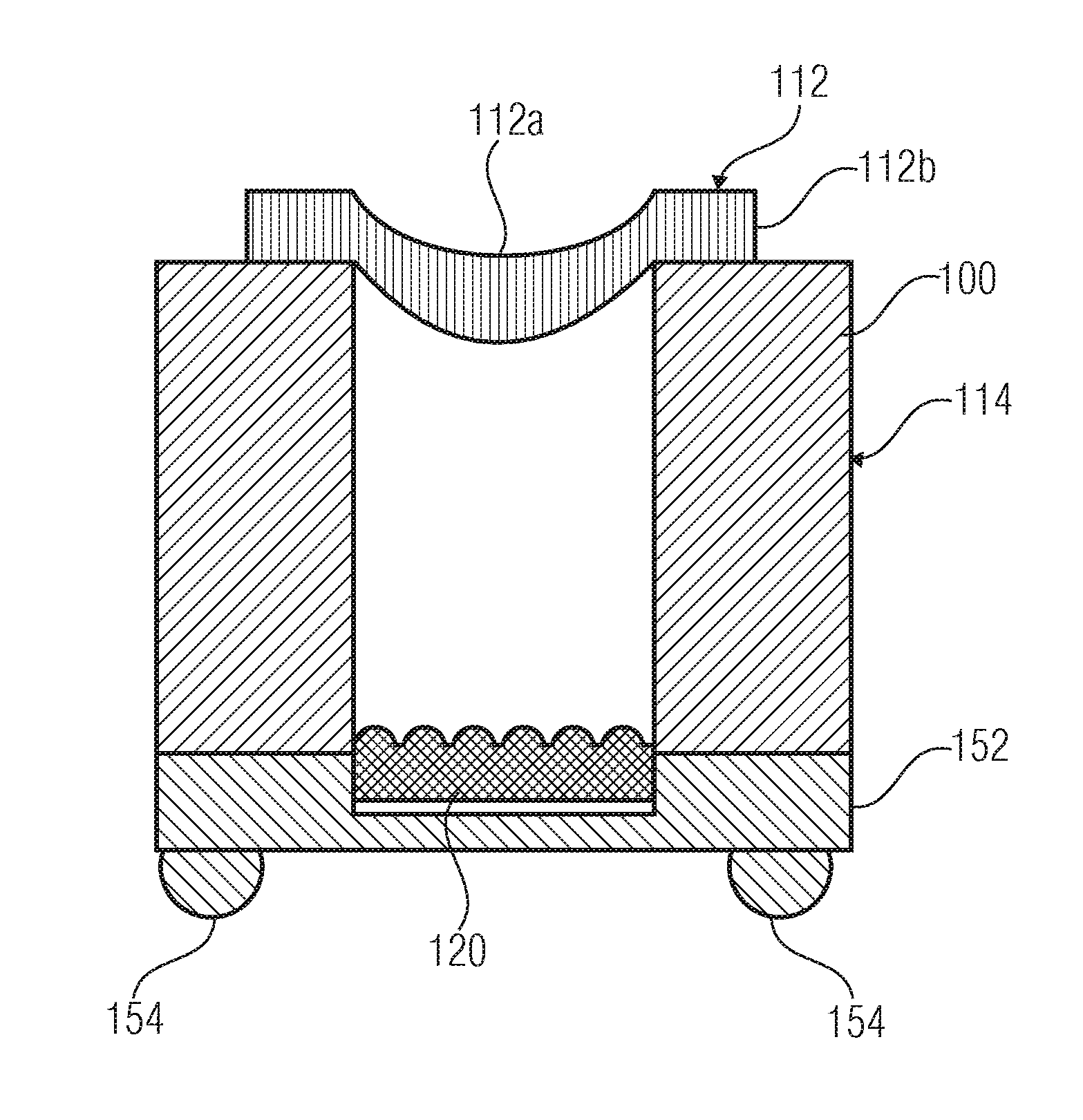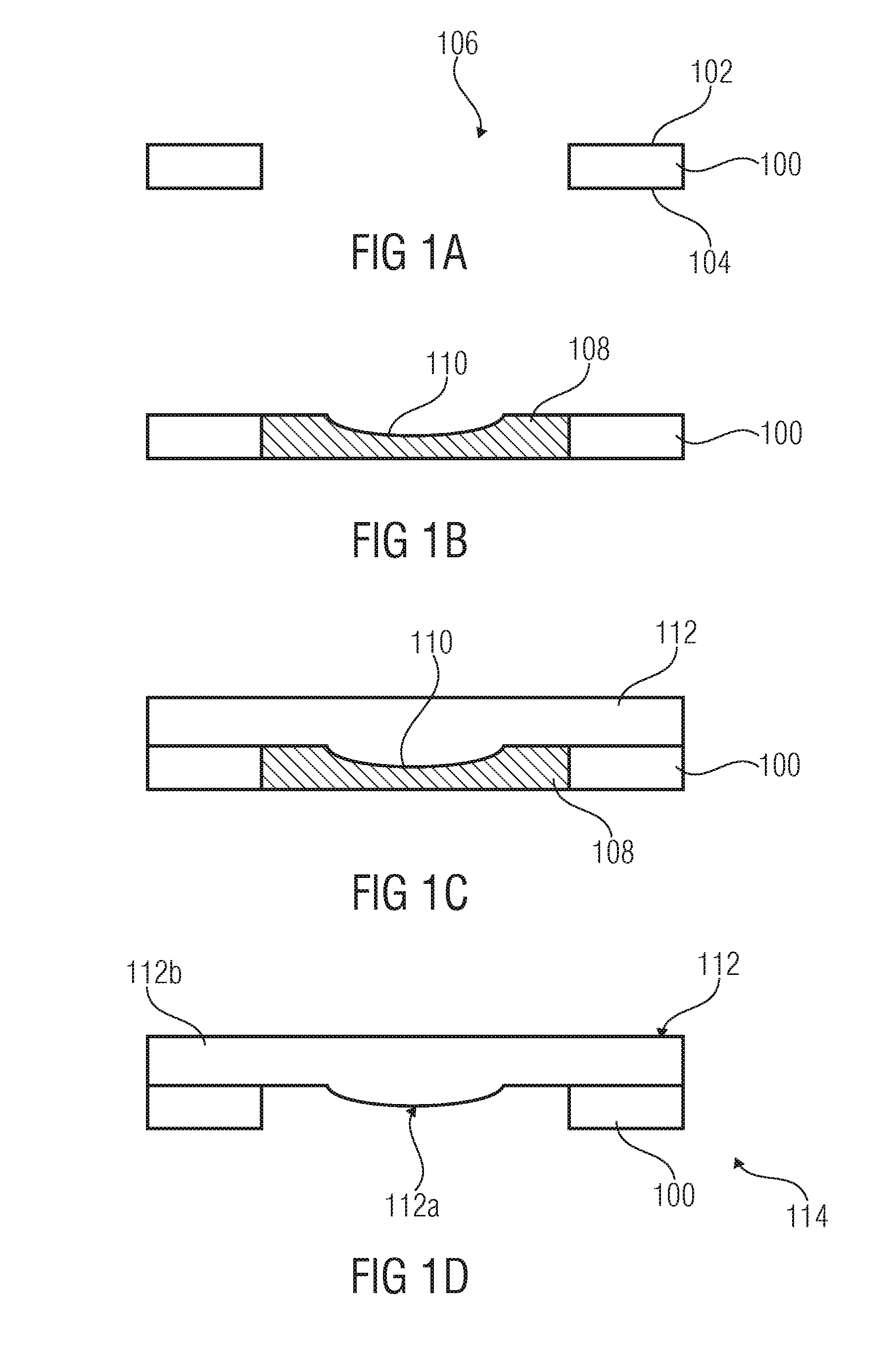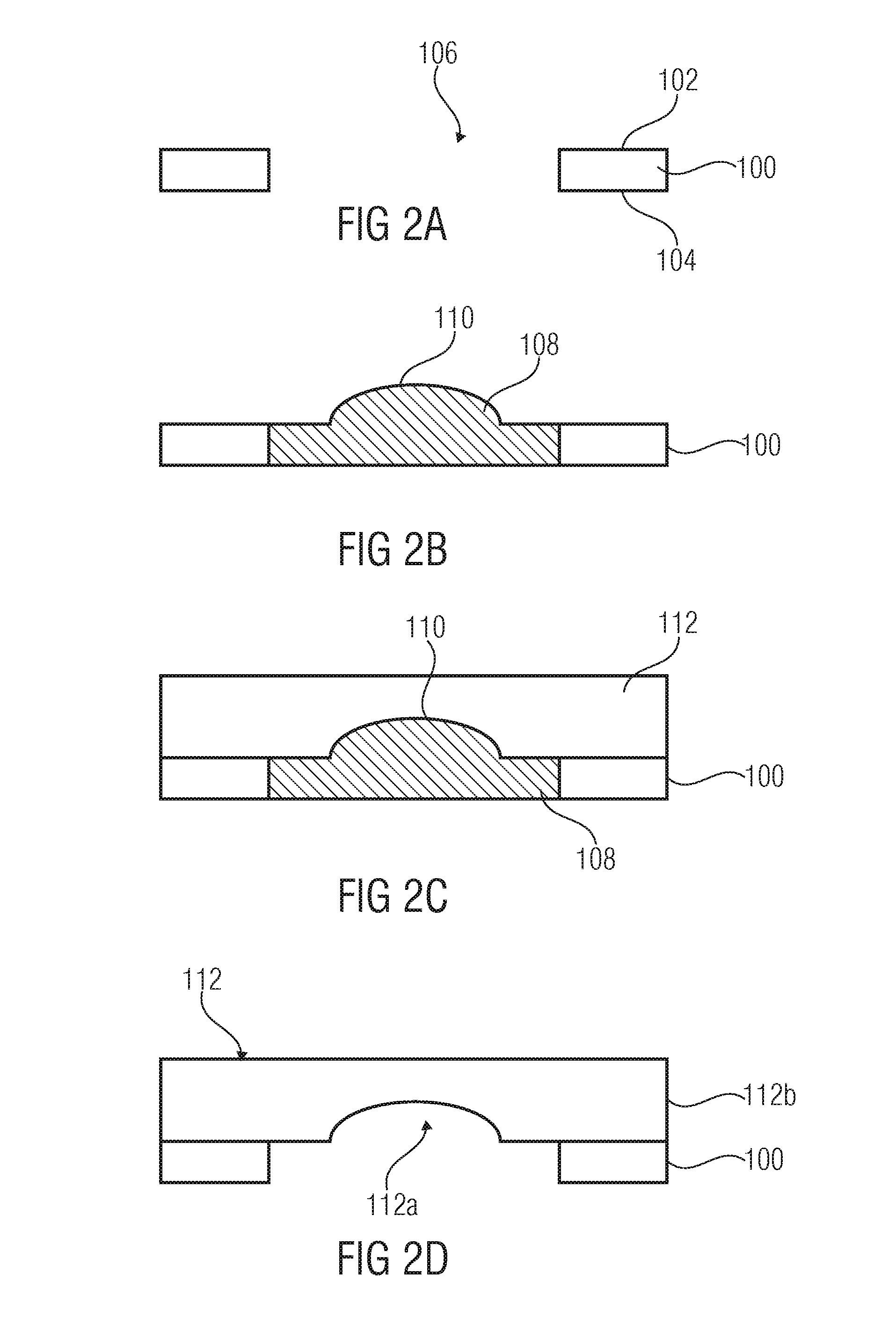Lens and method for manufacturing same
a technology of optics and lenses, applied in optics, mountings, instruments, etc., can solve the problems of reducing image quality, poor optical performance, and reducing image quality, so as to reduce or completely avoid aberration-type astigmatism, reduce optical system costs, and simple design
- Summary
- Abstract
- Description
- Claims
- Application Information
AI Technical Summary
Benefits of technology
Problems solved by technology
Method used
Image
Examples
Embodiment Construction
[0028]FIG. 1 shows an embodiment for manufacturing a plano convex lens.
[0029]As is shown in FIG. 1(a) a substrate 100 is provided, which is shown in a cross-sectional view and comprises two opposing surfaces 102 and 104 and a recess 106 formed in the upper surface 102 of the substrate 100 and extending through the thickness of the substrate 100 to the lower surface 104 of the substrate 100 thereby defining a hole through the substrate 100. The hole in the substrate 100 is temporarily filled with a solvable polymer (a sacrificial material) 108 (see FIG. 1(b)). The polymer may be a solvent (e.g. acetone or isopropanole)-soluble polymer, like a conventional photoresist or a special water-soluble polymer / photoresist (typically on a polyvenylalcohole-basis). A portion 110 of the polymer 108 is shaped in accordance with a first desired lens surface. The portion 110 is only shaped into the polymer material 108 within the recess 108.
[0030]A final UV-polymer 112 (which may be an organic-inor...
PUM
| Property | Measurement | Unit |
|---|---|---|
| refractive index | aaaaa | aaaaa |
| thickness | aaaaa | aaaaa |
| shape | aaaaa | aaaaa |
Abstract
Description
Claims
Application Information
 Login to View More
Login to View More - R&D
- Intellectual Property
- Life Sciences
- Materials
- Tech Scout
- Unparalleled Data Quality
- Higher Quality Content
- 60% Fewer Hallucinations
Browse by: Latest US Patents, China's latest patents, Technical Efficacy Thesaurus, Application Domain, Technology Topic, Popular Technical Reports.
© 2025 PatSnap. All rights reserved.Legal|Privacy policy|Modern Slavery Act Transparency Statement|Sitemap|About US| Contact US: help@patsnap.com



